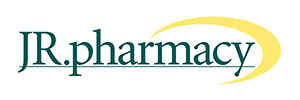Ever set off to travel somewhere and did not know where you were going? Have an idea of where you are heading but no clue on how to get there – unless you look at the map.
We are currently operating in unprecedented economic times and so the journey of the next twelve months is no different to travelling into unchartered waters. Therefore you will need a map.
I am of course referring to setting a budget. As wholesalers try to reign in 60 and 90 day accounts to 30 days the amount of money pharmacy needs to find is extraordinary and understanding the projected cashflows has never been more important.
The budget process is often viewed as a meaningless tool that once done find its way to the top draw of the desk until the end of the year when you compare it to actual results. In fact it should be drafted, monitored/reviewed and changed if extenuating circumstances exist so that by the time you get to the end of the year you know if you made it and if not how much you miss or exceed it by and why. Just like reading a road map, if you take a wrong turn or a detour forces you another way, you should review the map to get back on track before you drive off into oblivion.
The budget needs to be constructed using the historical information (prior period financial reports) as a guide but needs to be tempered by the general business environment and other externalities affecting pharmacy.
For example, what effect are the PBS reforms having on your sales and gross profit? What will the May 2009 Federal Budget means to the pharmacy? What is happening in retail sales in Australia and does your store reflect that trend? Being able to accurately model and understand the impacts (positive or negative) will allow you to manage the changes proactively, not reactively.
Retail sales growth will be more difficult in the coming year if you choose to do the same as you did last year. Customers are still spending but are savvier on where they spend in their search for “value”. You must look at your competition and be competitive (not through discounting) but through offering something different that the customer wants.
A monthly budget model will show monthly stock purchases. This will force you to continually review stock levels and move slow moving items before putting more stock into the pharmacy. The budgeted cashflow proving that you cannot hold large amounts of slow moving stock. When stores get into cashflow difficulties, it is generally a direct result of overstocking because they are not using a monthly purchases budget.
Setting budgets for overheads like wages and advertising is imperative. Setting a target of 12% or 13% wages to sales, understand what the monthly sales are projected to be and roster the weeks accordingly.
If you want advertising to be 1.5% of sales, what will the money be spent on that will be effective and hopefully increase sales.
Finally understand the cost of finance on the pharmacy. Budgeted profit does not always mean a positive cashflow. Maybe the turn of the new financial year is a great time to consider refinancing to free up cash?
So as you set of on the journey of the 2010 financial year, ask yourself, have you got the map out and do you understand where you are going? The last thing you want to be saying is “are we there yet?” and not being able to answer the question.
Article by Norman Thurecht – Partner JR Pharmacy Services





